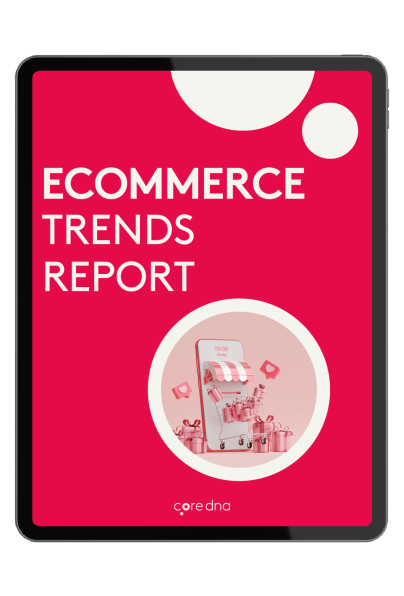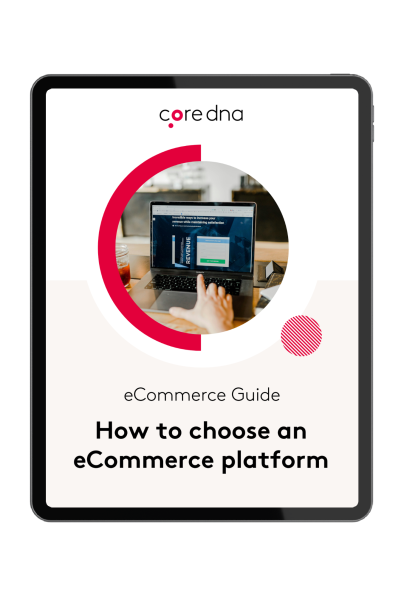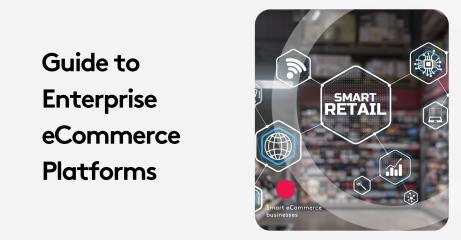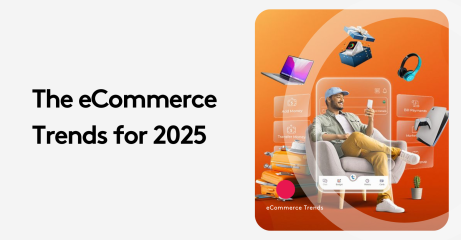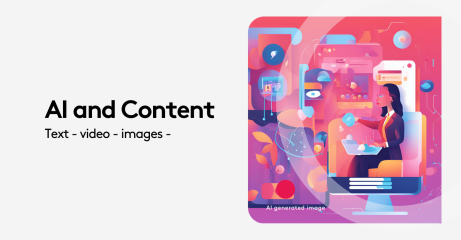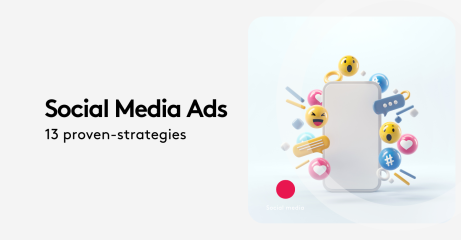10 eCommerce Case Studies: Key Insights and Surprising Results
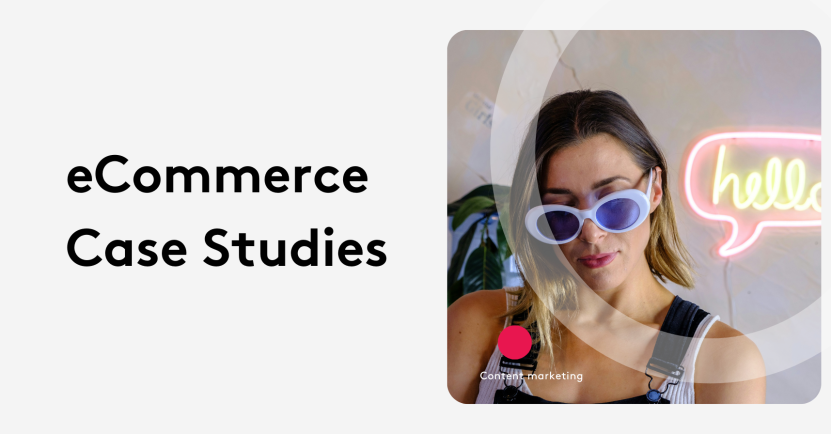
If you are looking for inspiration, you are in the right spot. In this article, we will take a look at 10 eCommerce case studies and the strategies they used to increase sales, brand recognition and user experiences.
From SEO strategies to viral social campaigns, we tried to get an example of every possible strategy to grow your e-commerce brand and leave a lasting impression on your audience.
eCommerce is all about being creative, delivering exceptional digital experiences and getting people to the click that checkout button. So without further do, let's dive in.
Key takeaways
- The Sill: 45% organic traffic boost through long-tail SEO and site speed optimization
- tentree: 13x ROI from scaling influencer program from 20 to 80 creators
- Huckberry: 9.4% increase in revenue via AI-powered personalization with Algolia
- Sugarfina: 15% YoY Black Friday sales lift from “Build Your Own Bento Box” feature
- YETI: 63% growth in mobile conversions after mobile-first UX overhaul
- Universal Yums: Subscription system scaled to 20,000 renewals/hour
- Dagne Dover: 12,000% ROI and 100K+ subscribers from SMS via Klaviyo
- Liquid Death: 26% revenue increase through viral social campaigns and edgy branding
- Brooklinen: Bundling + targeted landing pages increased AOV and lowered CAC
- Haus: Captured 10,000+ sign-ups before launch using teasers and referrals
On this page:
[eCommerce case study #1] The Sill: 45% increase in organic traffic
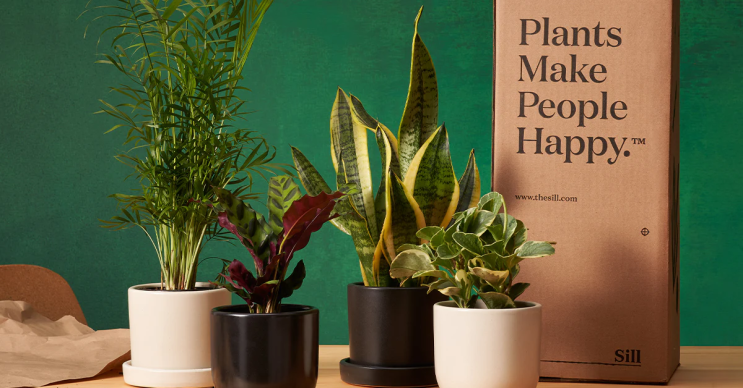
Brand: The Sill
Products: Indoor plants and accessories
Learning: The Sill optimized its site for SEO in 2024, targeting long-tail keywords and boosting site speed, driving a 45% increase in organic traffic.
Takeaway: SEO is a mid-market superpower—owning organic search can scale traffic cost-effectively.
The Sill is a great example of a brand harnessed the power of SEO to supercharge its digital presence. They conducted a focused SEO strategy leveraging long-tail keywords like “best plants for low light” while also fixing all the performance issues and ensuring almost perfect onsite experience. The Sill achieved a remarkable 45% increase in organic traffic.
The sill saw an opportunity in the growing trend of urban gardening. The sill marketing team harnessed the power of SEO and created content that answers the exact queries enthusiastic urban gardeners typed. This allowed them so save on hefty ad campaign and hack their way to growth.
How to implement this SEO strategy for your brand:
Identify Long-Tail Keywords Relevant to Your Niche:
Research specific, low-competition phrases your target audience searches for (e.g., “durable hiking boots for beginners” if you sell outdoor gear). Use tools like Google Keyword Planner or Ahrefs to find terms with decent search volume and intent, then weave them naturally into product descriptions, blog posts, and category pages to boost discoverability.
Optimize Site Speed for User Experience and Rankings
Audit your site’s loading time using Google PageSpeed Insights or GTmetrix. Compress images, enable browser caching, and minimize CSS/JavaScript files to achieve a load time under 2 seconds. Faster sites rank higher on Google and keep visitors engaged, reducing bounce rates.
Create Evergreen Content to Attract Organic Visitors
Develop blog posts or guides tied to your products that answer customer questions (e.g., “How to Care for Succulents in Winter” for a plant shop). Update these regularly to stay relevant, and interlink them with product pages to drive traffic deeper into your sales funnel.
Use Technical SEO as a foundation
Technical SEO is the foundation of a digital presence. Clean URL structures, mobile responsiveness, and proper meta tags (titles, descriptions) are the basics. Also make sure you submit an updated XML sitemap to Google Search Console after optimizations to help search engines crawl your site more effectively.
[eCommerce case study #2] Tentree - eCommerce influencer strategy
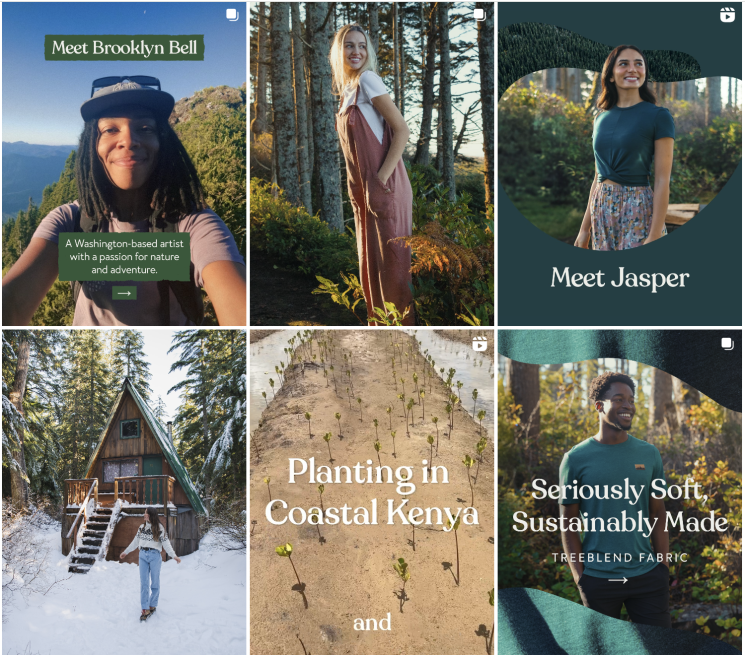
Brand: tentree
Products: Sustainable clothing and accessories
Learning: tentree scaled its influencer marketing program from 20 to 80 creators in 2024 using GRIN, driving 800+ conversions and achieving a 13x ROI.
Takeaway: Scaling the right creator partnerships can deliver major returns—especially when your brand mission resonates.
tentree,the eco-conscious apparel brand known for planting trees with every purchase, leveled up its influencer marketing strategywith help from GRIN’s creator management platform.
By expanding its roster from 20 to 80 carefully selected creators, tentree generated over 800 conversions and realized a 13x return on investment. This approach turned brand advocates into revenue drivers—without relying on traditional ad spend.
How to build an influencer marketing strategy:
Find influencers that align with your brand image and values
Don't prioritize views and followers but rather influencers who genuinely align with your mission and audience. You can use platforms like GRIN to vet creators based on engagement rates, content style, and audience demographics.
Focus on building relationships
When working with influencers that embody your values, you can turn one-off posts into long-term partnerships. Make the creators true brand ambassadors by giving them early access, exclusive bundles, or even creating co-branded products to deepen the relationship and increase authenticity.
Track ROI
Influencer marketing is as measurable as you google ad campaign. Having clear KPIs can help you see if your campaigns are paying off. Monitor conversion volume and ROI closely, as tentree did, to optimize future outreach and budget allocation.
[eCommerce case study#3] Huckberry: AI-personalization

Brand: Huckberry
Products: Men’s apparel, gear, and outdoor essentials
Learning: Huckberry integrated Algolia’s AI personalization engine, resulting in a 9.4% increase in revenue from personalized user profiles.
Takeaway: AI-driven personalization turns browsing into buying—boosting revenue through relevant, real-time experiences.
Huckberry, has fully embraced Algolia’s AI personalization engine and integrated it into its ecommerce platform, This strategic enhancement offered shoppers tailored product recommendations based on individual browsing behavior and preferences resulting in a 9.4% boost in revenue from personalized profiles. By making every visit feel curated, Huckberry increased customer engagement and conversions without lifting its ad budget.
How to implement this personalization strategy for your brand:
Think personalization not conditional content delivery
There is a big difference between displaying content based on condition and actually personalizing experiences based on real-time actions. At Core dna we developed a zero-data personalization engine that can adapt content based on real-time actions.
Personalize Key Touchpoints in the Customer Journey
Apply personalized recommendations on homepage carousels, PDPs, and checkout pages. For returning visitors, show “picked for you” sections that reflect their most recent behavior.
A/B Test for Lift in Conversions
Run experiments comparing personalized vs. non-personalized experiences. Measure impact on revenue per user, conversion rate, and bounce rate.
[eCommerce case study #4] Sugarfina: Build your own box
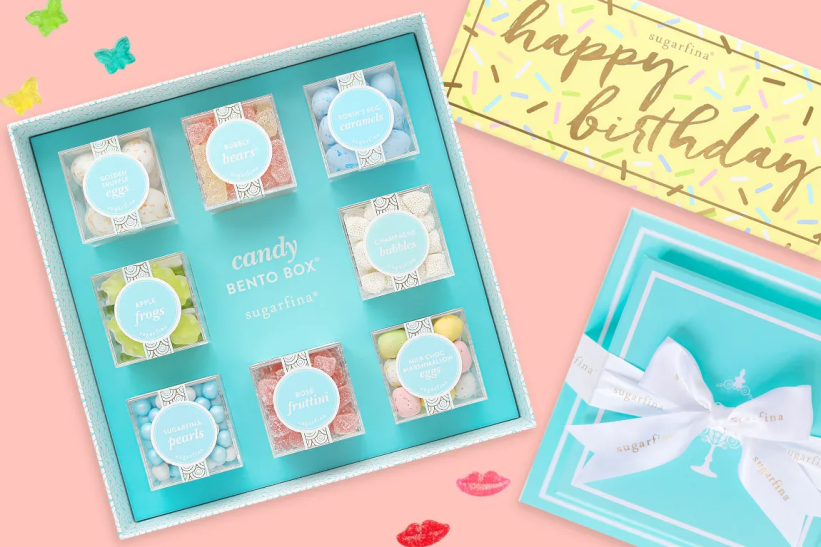
Brand: Sugarfina
Products: Luxury candies and confections
Learning: Sugarfina introduced the "Design Your Own Candy Bento Box®" feature, leading to a 15% year-over-year increase in Black Friday sales.
Takeaway: Offering customizable products enhances customer engagement and drives significant sales growth.
Sugarfina is the adult version of a kid's candy shop. From champagne gummy bears to Rose strawberries they have made their mark as a luxury candy store. To make their experience even more personalized, they launched the "Design Your Own Candy Bento Box®". This was an interactive experience on their eCommerce website where shoppers can pick their own sweets and fill the box, a little nod to a child in a candy store.
This new offering allowed customers to curate personalized candy boxes, selecting from a variety of gourmet sweets to create assortments of their favorite candy. The initiative resulted in a 15% year-over-year increase in Black Friday sales.
Interactive experiences online will become increasingly on-demand
Offer a Customization Whenever you Can
People love to make things unique and special and brands should embrace that. Provide a variety of choices/ personalization options whenever possible to that cater to different customer preferences. Think about the different occasion people would like to personalize your product or service and find ways to make it fun and accessible. This could include product types, colors, sizes, or flavors, engraving and more depending on your product line.
Focus on Personalization in Marketing Campaigns
Treat customization as a new product you can launch during big calendar events. Have targeted marketing efforts, emphasizing the uniqueness and personal touch customers can achieve. Utilize all your channels to promote this new offering: email marketing, social media, and on-site banners to showcase this offering.
Monitor Feedback and Engagement
Continuously evaluate what is working and what's not and adjust. Collect and analyze customer feedback to understand their experience with the customization feature. Use this data to make continuous improvements and tailor offerings to meet customer desires effectively.
[eCommerce case study #5] Yeti: mobile-first eCommerce

Brand: YETI
Products: Premium outdoor gear and drinkware
Learning: YETI revamped its eCommerce platform to enhance mobile-first user experience, resulting in a 63% year-over-year increase in mobile conversion rates.
Takeaway: Investing in a seamless, immersive mobile shopping experience can significantly boost conversion rates and customer engagement.
YETI is the ultimate example of survival brand. We can learn so much from their marketing (from their product surviving a fire and flipping that story into a viral community moment to becoming a status symbol of the american suburban women) but for the purpose of this article we will focus on their mobile first experience.
By incorporating design features like background videos and unique scrolling elements, YETI created an immersive browsing experience that did not compromise page load times. This strategic overhaul led to a 63% year-over-year increase in mobile conversion rates.
Mobile Optimization Strategy for Your Brand:
Design for Mobile-First Experience:
When designing for mobile, don't think responsive think mobile-first. Prioritize mobile-friendly design elements that enhance user engagement without sacrificing performance.
Simplify Navigation:
Implement intuitive navigation structures that allow users to find products effortlessly and add them to cart. Consider features like sticky menus or simplified category structures.
Optimize Page Load Speed:
Regularly test and optimize your website's load times on mobile devices. Compress images, leverage browser caching, and minimize code to enhance performance.
By focusing on mobile user experience, as YETI did, brands can significantly improve their eCommerce performance and customer satisfaction
[eCommerce case study #6] Universal Yums - Subscription model
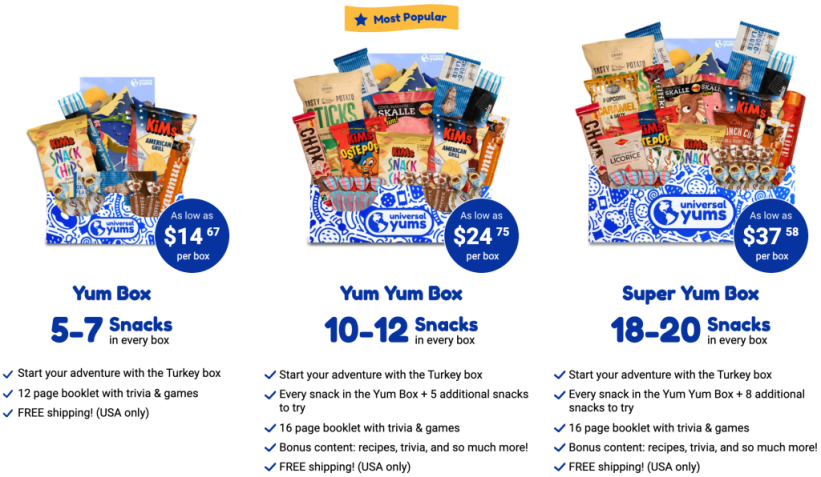
Brand: Universal Yums
Products: International snack subscription boxes
Learning: Universal Yums optimized its subscription renewal process, achieving a processing rate of up to 20,000 renewals per hour, ensuring seamless customer experiences during peak periods.
Takeaway: Efficient subscription management is crucial for scaling eCommerce operations and maintaining customer satisfaction.
Universal Yums shows us how a subscription model can apply to absolutely anything and also help you create loyal customers. With great experience and delicious snacks , they found the recipe for sustainable growth. Yet, they were not prepared for their success and faced the challenge of managing a high volume of monthly subscription renewals.
With 10,000 to 20,000 renewals per hour, they needed a system that could scale with them and ensure timely order processing.
Subscription business model must-haves
Optimize Hosting Infrastructure
Invest in robust hosting solutions capable of handling high traffic and transaction volumes, especially during peak periods.
Enhance Backend Processes
Streamline backend operations to efficiently manage large-scale subscription renewals and reduce processing times.
Communicate with Subscribers
Keep customers informed about their subscription status and any updates, fostering trust and transparency.
[eCommerce case study #7] Dagne Dover - SMS Marketing
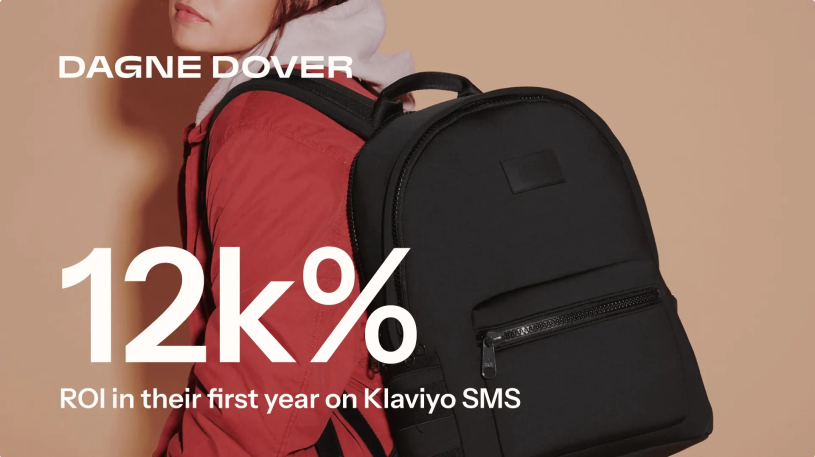
Brand: Dagne Dover
Products: Bags and accessories
Learning: Dagne Dover implemented Klaviyo's SMS marketing platform, achieving a 12,000% ROI in their first year and growing their subscriber list to over 100,000.
Takeaway: Integrating SMS marketing can significantly enhance customer engagement and drive substantial returns.
People don't open their emails or they just end-up in spam. Dagne Dover went the SMS route and it did not dissapoint. This strategic move allowed them to connect directly with customers, leading to a remarkable 12,000% return on investment within the first year and an SMS subscriber base exceeding 100,000.
How to leverage SMS marketing for your brand:
Choose a Comprehensive Platform:
Select a marketing platform that seamlessly integrates SMS, email and also your CRM and eCommerce platform providing a unified view of customer interactions.
Make it worth it for your customer to give you their phone number
Always remember this is a two way relationship. If you are going to ask someone for their phone number, better make it worth their time. Encourage customers to opt-in for SMS by offering discounts or fun and free add-ons tot heir purchases. Segment the list based on behaviors and preferences for targeted for more personalized messaging.
Craft Personalized and Timely Messages:
Develop SMS campaigns that offer value, such as exclusive promotions or timely updates, ensuring content resonates with recipients.
Monitor Performance and Optimize:
Regularly analyze key metrics like open rates and conversions to refine SMS strategies and enhance effectiveness. By adopting SMS marketing, as Dagne Dover did, brands can foster direct customer relationships, leading to increased engagement and impressive returns.
[eCommerce case study #8] Liquid Death - Viral social campaign
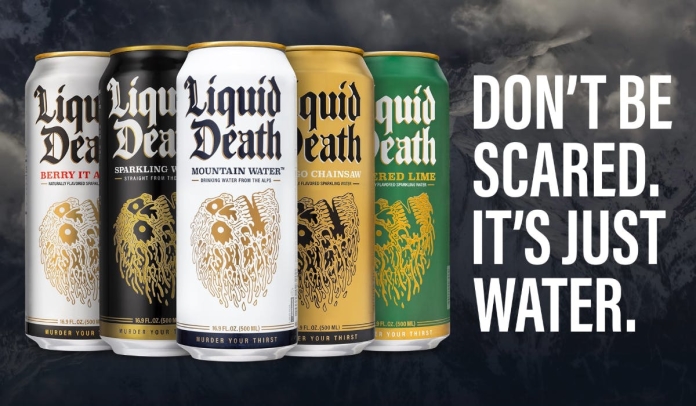
Brand: Liquid Death
Products: Canned mountain water
Learning: Liquid Death's unconventional marketing strategies, including edgy branding and viral social media campaigns, contributed to a 26% revenue increase in 2024, reaching $333 million.
Takeaway: Bold and unconventional marketing can differentiate a brand in a saturated market, leading to significant revenue growth.
Liquid Death, the name itself is a power move. No doubt that they found their blue ocean and they have successfully disrupted the bottled water industry. By adopting a heavy metal aesthetic and engaging in viral campaigns, the company has captured consumer attention and loyalty. This approach led to a 26% increase in revenue in 2024, totaling $333 million.
How to disrupt your market:
Develop a Distinctive Brand Identity:
Craft a brand persona that stands out from competitors, utilizing unique visuals and messaging that resonate with your target audience.
Engage in Creative Content Marketing:
Produce content that entertains and engages, encouraging social sharing and increasing brand visibility.
Leverage Social Media Platforms:
Utilize social media to disseminate your content, interact with consumers, and build a community around your brand.
Monitor and Adapt to Consumer Feedback:
Pay attention to audience reactions and be willing to adjust strategies to maintain relevance and appeal.
[eCommerce case study #9] Brooklinen - Increase AOV with landing pages

Brand: Brooklinen
Products: Luxury bedding and home goods
Learning: Brooklinen deployed targeted landing pages and product bundling strategies, leading to increased average order value (AOV) and lower customer acquisition costs (CAC).
Takeaway: Smart bundling + intent-driven landing pages = eCommerce gold.
Brooklinen, the DTC darling for high-quality sheets has cracked the code for intent-based landing pages with curated product bundles. Shoppers coming from specific ads (e.g., “bedding for hot sleepers”) landed on tailored pages showcasing relevant products with bundled savings. These targeted flows increased the conversion rate and simplified the shopping experience but encouraged higher spend per order, while reducing the cost to acquire those customers.
Tips to increase your AOV
Create Targeted Landing Pages
Always make sure that the product you are showing in your ad is the one showed on the landing page. If your ad viewers land on a general product page, yiou lost them. Segment your ad campaigns by audience pain points or needs, then build unique landing pages that speak directly to those. Check out tools like Unbounce, Replo, or Shogun to make this scalable.
Bundles Offers Always Work.
Use customer behavior data to identify product pairings that make sense (e.g., sheets + pillow s). Highlight bundle savings clearly to incentivize larger orders.
Test Messaging and Offers Per Audience Segment
Run A/B tests to identify which hooks—comfort, sustainability, pricing, convert best for each segment. Adjust landing page copy and bundle configurations accordingly.
[eCommerce case study #10] Haus - scarcity as a sales tactic

Brand: Haus
Products: Low-ABV apéritifs
Learning: Haus launched with a pre-release email campaign that used teasers, founder storytelling, and referral incentives to capture 10,000+ email sign-ups before launch.
Takeaway: Pre-launch momentum can fuel explosive growth when you nail the messaging.
Before they even shipping a single bottle, Haus built buzz with their pre-launch campaign focusing on list-building and brand storytelling. The founders shared the “why” behind the brand, showcased the clean ingredients, and encouraged early fans to sign up and share. Referral rewards and exclusive early access added a layer of urgency, helping Haus rack up more than 10,000 email subscribers before its launch day.
How to create the buzz around your brand
Craft a Story That Resonates
Create a story your target audience can identify with. Share your mission, vision, and what makes your brand culturally relevant. People are increasingly seeing brands as an extension of themselves and a way to belong. Think about it as buying because of the why, not just what.
Build an Email Waitlist with Value-Driven Teasers
Create a landing page with a compelling CTA (e.g., “Be first to try it”). Share sneak peeks of product design, benefits, and launch day perks to keep people engaged.
Incentivize Referrals with Tiered Rewards
Use tools like Viral Loops or KickoffLabs to encourage sharing. Offer escalating rewards (discounts, exclusive access, swag) for each referral milestone.
Keep Momentum Alive Until Launch
Send countdown emails, behind-the-scenes content, and testimonials leading up to launch. Build anticipation while warming up your list to convert fast when you go live.

